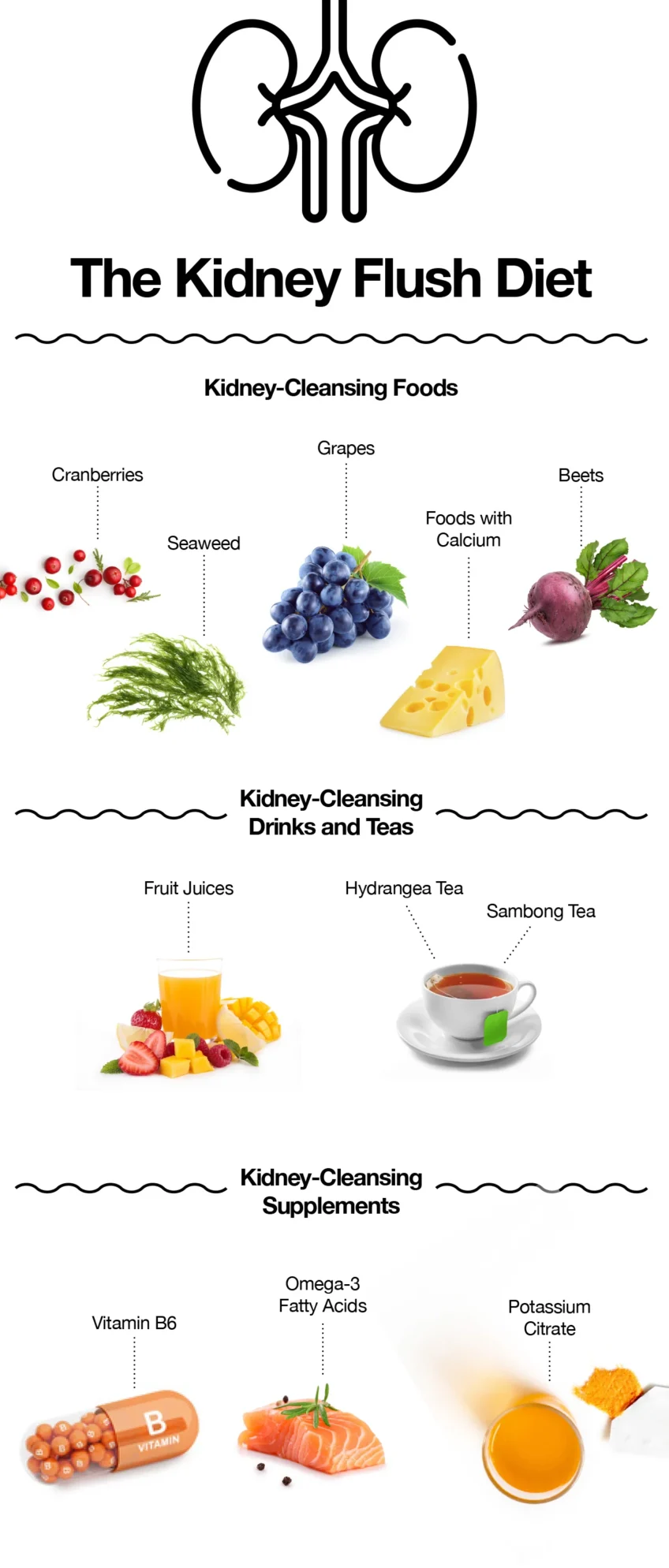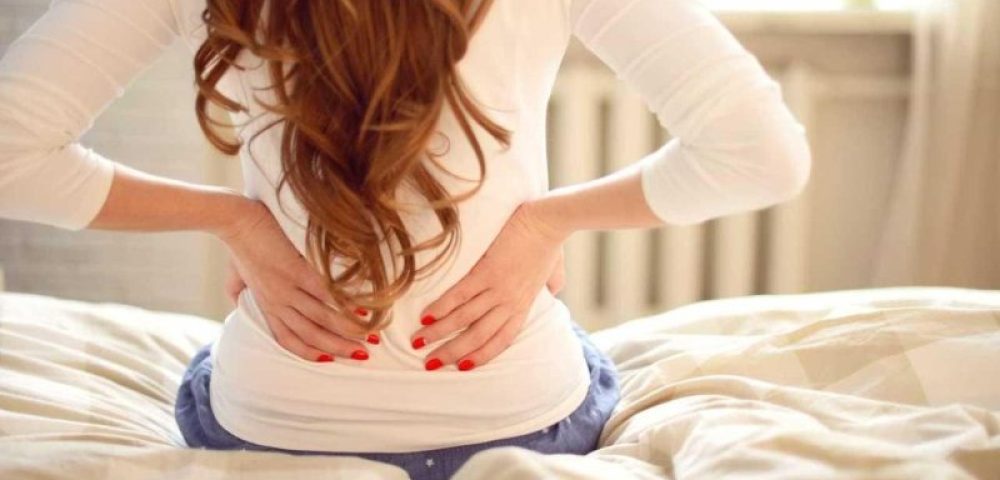When it comes to kidney stones and urinary tract infections (UTIs), the symptoms can often overlap, making it difficult to determine which condition you may be experiencing. In this article, we will discuss the differences between the two, their respective symptoms, and the steps you can take to get a proper diagnosis and treatment.
| Feature | UTI (Urinary Tract Infection) | Kidney Stones |
|---|---|---|
| Cause | Bacterial infection, usually E. coli | Crystalline mineral deposits |
| Common Risk Factors | Sexual activity, urinary tract abnormalities, urinary catheters, weakened immune system | Dehydration, diet, obesity, medical conditions, family history |
| Pain Location | Lower abdomen, pelvic area | Side, back, radiating to lower abdomen and groin |
| Pain Quality | Dull ache or pressure, burning during urination | Sharp, stabbing, severe, fluctuating intensity |
| Fever and Chills | More common, especially if infection reaches kidneys | Less common, usually if infection is present |
| Urine Color and Odor | Cloudy, dark, foul-smelling | Pink, red, brown (due to blood) |
| Nausea and Vomiting | Less common | More common, especially with severe pain or blockage |
| Diagnosis | Urinalysis, blood tests, physical examination | Urinalysis, blood tests, imaging studies (X-rays, ultrasounds, CT scans) |
| Treatment | Antibiotics, pain relief, fluid intake | Pain management, fluid intake, medical intervention for large stones or complications |
Page Contents
- 1 I. Kidney Stones
- 2 II. Urinary Tract Infections (UTIs)
- 3 III. Differentiating Kidney Stones and UTIs
- 4 IV. Diagnosis and Treatment
- 5 Can UTI test detect kidney stones?
- 6 Do UTIs and kidney stones happen at the same time?
- 7 Can kidney stones go away on their own?
- 8 Does a kidney stone hurt with movement?
- 9 What is the fastest way to flush your kidneys?
- 10 Does lemon juice dissolve kidney stones?
- 11 Antibiotics?
I. Kidney Stones
A. What are kidney stones?
Kidney stones are hard, crystalline mineral deposits that form inside the kidneys. They can vary in size, from a grain of sand to a golf ball. When these stones grow too large or block the urinary tract, they can cause severe pain and discomfort.
B. Causes
Several factors can contribute to the formation of kidney stones, including:
- Dehydration: Not drinking enough water can cause urine to become concentrated, increasing the risk of stone formation.
- Diet: A diet high in sodium, oxalate, and animal proteins can promote the formation of kidney stones.
- Obesity: Being overweight can increase the risk of developing kidney stones.
- Medical conditions: Certain medical conditions, like hyperparathyroidism, can lead to an increased risk of kidney stones.
- Family history: Having a family history of kidney stones can also increase the risk of developing them.
C. Symptoms
While some kidney stones may not cause any symptoms, others can produce a range of discomforts, including:
- Severe pain in the side and back
- Pain that radiates to the lower abdomen and groin
- Fluctuating pain intensity
- Painful urination
- Pink, red, or brown urine
- Cloudy or foul-smelling urine
- Nausea and vomiting
- Frequent urination or the persistent urge to urinate
- Fever and chills (if an infection is present)
II. Urinary Tract Infections (UTIs)
A. What is a UTI?
A urinary tract infection is an infection caused by bacteria, most commonly Escherichia coli (E. coli), which enters the urethra and travels up to the bladder or kidneys. UTIs can affect any part of the urinary system, including the kidneys, bladder, ureters, and urethra.
B. Causes
The main causes of UTIs include:
- Bacterial invasion: Bacteria from the bowel, particularly E. coli, are the most common cause of UTIs.
- Sexual activity: Sexual intercourse can introduce bacteria into the urethra, increasing the risk of infection.
- Urinary tract abnormalities: Structural abnormalities of the urinary tract can cause urine to pool, increasing the risk of infection.
- Use of urinary catheters: Prolonged use of urinary catheters can increase the risk of urinal infections.
- Weakened immune system: A weakened immune system can make it difficult for the body to fight off infections, including UTIs.
C. Symptoms
The symptoms of a UTI can include:
- A strong, persistent urge to urinate
- A burning sensation during urination
- Cloudy, dark, bloody, or foul-smelling urine
- Frequent, small amounts of urine
- Pain or pressure in the lower abdomen
- Feeling tired or shaky
- Fever and chills (if the infection has reached the kidneys)
III. Differentiating Kidney Stones and UTIs
Although there is an overlap in symptoms between kidney stones and UTIs, there are key differences that can help distinguish the two conditions:
A. Pain location and intensity
Kidney stone pain is typically localized to the side and back, radiating to the lower abdomen and groin. The intensity of the pain can fluctuate and is often described as sharp, stabbing, or severe. In contrast, UTI pain is usually felt as a constant, dull ache or pressure in the lower abdomen and pelvic area, accompanied by a burning sensation during urination.
B. Fever and chills
While both kidney stones and UTIs can cause fever and chills, these symptoms are more common with UTIs, especially if the infection has spread to the kidneys. If you experience fever and chills alongside other UTI symptoms, it may be more likely that you have a UTI rather than kidney stones.
C. Urine color and odor
Both conditions can cause changes in the appearance and smell of your urine. However, kidney stones are more likely to cause pink, red, or brown urine due to blood in the urine, while UTIs often result in cloudy, dark, or foul-smelling urine.
D. Nausea and vomiting
Nausea and vomiting can occur in both kidney stones and UTIs. However, it is more commonly associated with kidney stones, particularly when the stone is causing severe pain or blockage in the urinary tract.
IV. Diagnosis and Treatment
If you suspect that you may have kidney stones or a UTI, it is crucial to seek medical attention promptly. Your healthcare provider will likely perform a physical examination, discuss your symptoms, and conduct diagnostic tests to determine the cause of your discomfort.
A. Diagnostic tests
Some common tests used to diagnose kidney stones and UTIs include:
- Urinalysis: A urine sample is examined for the presence of bacteria, red and white blood cells, and crystalline substances that may indicate kidney stones or infection.
- Blood tests: Blood tests can help determine if there is an infection or kidney dysfunction.
- Imaging studies: X-rays, ultrasounds, or CT scans can help visualize kidney stones or other abnormalities in the urinary tract.
B. Treatment
Treatment for kidney stones and UTIs varies depending on the severity and underlying cause of the condition.
- Kidney stones: a. Pain management: Over-the-counter pain relievers, prescription medications, or even intravenous pain relief may be necessary to manage pain caused by kidney stones. b. Fluid intake: Drinking plenty of water can help flush out small stones and prevent the formation of new ones. c. Medical intervention: For larger stones or those causing complications, medical procedures such as extracorporeal shock wave lithotripsy (ESWL), ureteroscopy, or percutaneous nephrolithotomy may be required to remove or break down the stones.
- UTIs: a. Antibiotics: Antibiotics are the primary treatment for UTIs to kill the bacteria causing the infection. b. Pain relief: Over-the-counter pain relievers or prescription medications may be used to alleviate discomfort during urination. c. Fluid intake: Drinking plenty of water can help flush out bacteria from the urinary tract.
Can UTI test detect kidney stones?

A UTI test, such as urinalysis, cannot directly detect kidney stones. Urinalysis is primarily used to identify signs of infection, such as the presence of bacteria, white blood cells, and nitrites in the urine. While urinalysis may detect blood in the urine (hematuria), which can be a symptom of kidney stones, it cannot confirm the presence of stones by itself.
To diagnose kidney stones, healthcare providers typically use imaging studies, such as X-rays, ultrasounds, or CT scans, in addition to urinalysis and blood tests. These imaging studies can help visualize the kidney stones or any abnormalities in the urinary tract that may be causing the symptoms.
Do UTIs and kidney stones happen at the same time?
Yes, UTIs and kidney stones can happen at the same time, although it is not very common. Kidney stones can create an environment that makes it easier for a UTI to develop. The presence of a kidney stone can obstruct the flow of urine, causing it to stagnate and providing a breeding ground for bacteria. This can lead to a urinary tract infection, particularly if the stone is lodged in the ureter, which connects the kidneys to the bladder.
In some cases, a UTI can also contribute to the formation of kidney stones. Certain types of bacteria, like Proteus mirabilis, can produce an enzyme called urease. This enzyme breaks down urea in the urine, leading to an increase in ammonia and pH levels, which can promote the formation of struvite kidney stones.
If you suspect that you have both a UTI and kidney stones, it is essential to consult a healthcare professional for proper diagnosis and treatment. The combination of these two conditions can be particularly painful and may require a more comprehensive treatment approach.
Can kidney stones go away on their own?
Yes, some kidney stones can go away on their own, particularly if they are small in size. Stones that are smaller than 5 millimeters in diameter have a high chance of passing through the urinary tract without any medical intervention. Drinking plenty of water (2 to 3 liters per day) can help flush out small stones and prevent the formation of new ones.
However, larger stones may require medical intervention, as they can become lodged in the urinary tract, causing severe pain, complications, or even infections. In these cases, treatment options may include extracorporeal shock wave lithotripsy (ESWL), ureteroscopy, or percutaneous nephrolithotomy, depending on the size, location, and composition of the stone.
It is essential to consult a healthcare professional if you suspect you have a kidney stone, as they can evaluate your condition and recommend the appropriate course of action.
Does a kidney stone hurt with movement?
Kidney stone pain is typically not affected by body movement or position. The pain, often described as sharp, stabbing, or severe, is usually felt in the side and back, radiating to the lower abdomen and groin. The intensity of the pain can fluctuate, and it may come in waves. This is because the pain from kidney stones is primarily caused by the stone itself blocking the flow of urine, as well as by the dilation, stretching, or spasming of the ureter as it tries to push the stone out.
That being said, it is still possible for some body movements or positions to exacerbate the pain or make it more noticeable. However, the pain caused by a kidney stone is generally not related to the movement itself but rather to the pressure and irritation caused by the stone obstructing the urinary tract.
If you experience severe pain in your side, back, or lower abdomen, it is important to consult a healthcare professional for proper diagnosis and treatment.
What is the fastest way to flush your kidneys?

To flush your kidneys and promote optimal kidney function, follow these tips:
- Stay hydrated: Drinking plenty of water (approximately 2-3 liters per day, depending on individual needs) is crucial for maintaining kidney health. Adequate hydration helps dilute and flush out waste products, toxins, and excess minerals that can contribute to kidney stones or kidney dysfunction.
- Consume a kidney-friendly diet: Eat a balanced diet that includes fruits, vegetables, whole grains, lean proteins, and low-fat dairy products. Limit your intake of sodium, processed foods, and red meat, as these can contribute to kidney problems. If you have a history of kidney stones, pay attention to your intake of oxalate-rich foods (such as spinach, beet greens, and nuts) and discuss any necessary dietary modifications with your healthcare provider.
- Exercise regularly: Moderate physical activity can help maintain healthy blood pressure levels, which is essential for good kidney function. Aim for at least 150 minutes of moderate-intensity aerobic exercise per week, such as brisk walking, swimming, or cycling.
- Limit alcohol and caffeine intake: Consuming excessive amounts of alcohol or caffeine can be harmful to your kidneys. Limit your alcohol intake to no more than one drink per day for women and two drinks per day for men, and moderate your caffeine consumption to avoid putting stress on your kidneys.
- Quit smoking: Smoking can damage blood vessels and decrease blood flow to the kidneys, impairing their ability to function properly. Quitting smoking is beneficial for both your kidney and overall health.
- Manage existing health conditions: If you have chronic health conditions like diabetes or high blood pressure, work with your healthcare provider to manage them effectively. Keeping these conditions under control can help protect your kidneys from damage.
- Avoid overuse of over-the-counter medications: Frequent use of non-steroidal anti-inflammatory drugs (NSAIDs), such as ibuprofen, can have adverse effects on kidney function. Use these medications as directed and discuss any concerns with your healthcare provider.
While these tips can help flush your kidneys and maintain kidney health, it is essential to consult your healthcare provider if you suspect any kidney issues or if you require personalized advice for your specific health needs.
Does lemon juice dissolve kidney stones?

Lemon juice is often suggested as a home remedy to help dissolve or prevent kidney stones, particularly those composed of calcium oxalate, the most common type of kidney stone. The rationale behind this is that lemon juice contains citric acid, which can bind to calcium and help prevent the formation of calcium-based stones.
Citric acid can also increase urine volume and make the urine less acidic, which can inhibit the growth of kidney stones. Some studies have suggested that increased citrate levels in the urine can help reduce the risk of kidney stone formation.
However, lemon juice alone is unlikely to dissolve existing kidney stones. Drinking lemon juice or lemon water may be helpful as a preventive measure or as a supplement to other treatments prescribed by a healthcare provider, but it should not be considered a standalone treatment for kidney stones.
If you suspect that you have kidney stones or are at risk for developing them, it is essential to consult your healthcare provider for proper diagnosis and treatment. They can recommend appropriate dietary modifications, medications, or medical interventions based on your individual needs and the type of kidney stones you have.
Antibiotics?
Antibiotics are commonly prescribed for treating urinary tract infections caused by bacteria. The specific antibiotic chosen depends on the type of bacteria causing the infection and their susceptibility to various antibiotics. Some commonly prescribed antibiotics for UTIs include trimethoprim-sulfamethoxazole, nitrofurantoin, ciprofloxacin, and amoxicillin.
For kidney stones, antibiotics are not typically prescribed unless there is an associated infection, such as a UTI or a kidney infection (pyelonephritis). In these cases, antibiotics may be used to treat the infection while other methods are employed to address the kidney stones themselves.
If a patient has a struvite kidney stone, which is caused by certain types of bacteria, antibiotics may be used to help treat the infection and prevent the stone from growing. However, antibiotics alone are usually not sufficient to dissolve or remove the stone. In many cases, additional medical interventions, such as extracorporeal shock wave lithotripsy (ESWL), ureteroscopy, or percutaneous nephrolithotomy, are needed to address the stone.
If you suspect you have a UTI, kidney stones, or both, it is important to consult your healthcare provider for proper diagnosis and treatment. They will prescribe appropriate medications or interventions based on your specific condition and needs.
Conclusion
Differentiating between kidney stones and UTIs can be challenging due to their overlapping symptoms. However, by paying close attention to the nature of your pain, the presence of fever and chills, and the appearance and odor of your urine, you may be able to narrow down the cause of your discomfort. Regardless of your suspicion, it is essential to seek medical attention for an accurate diagnosis and appropriate treatment.
Leo Green, the embodiment of a wellness guru at Fischer Institute, brings boundless expertise as a health expert and certified personal trainer. With his dynamic approach and unwavering dedication, Leo empowers individuals to embrace a balanced lifestyle, unlocking their full potential for optimal health and vitality.
Also Read:
- Understanding UTI Complications - Can it cause spotting?
- What’s the Difference Between Top-Down and Bottom-Up…
- What’s the Difference Between a Psychologist and a…
- What Kind Of Salads Does Burger King Have - Burger…
- Can You Get a Pedicure if You Have Toenail Fungus?…
- Do You Have Underboob Rashes? Find Out What Causes…















